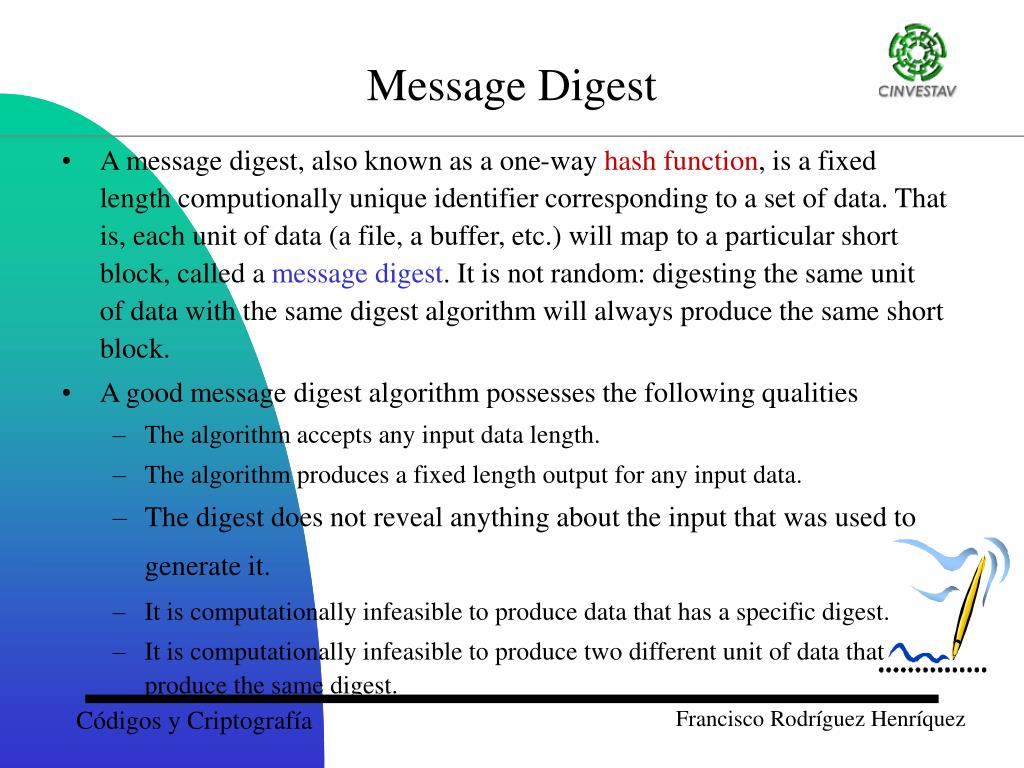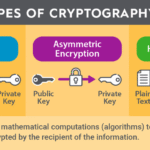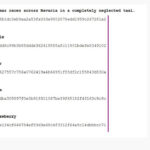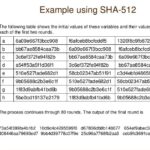In the vast labyrinth of cryptography, the term ‘message digest’ resonates like a haunting echo, invoking the concepts of condensation and authenticity. Simply put, a message digest is a unique representation of data, akin to a fingerprint for a specific set of information. This digest serves a vital role in ensuring the integrity of messages as they traverse the digital ether, acting as a guardian against tampering and fraud. But delving deeper, one discovers the intricate layers and compelling metaphor that lie beneath its surface.
At its core, a message digest functions similarly to a summation; it distills the essence of data into a compact form, through the application of cryptographic hash functions. One could liken this process to the alchemical transmutation of base metals into gold—merely a raw material transforms into a valuable artifact of calculated uniqueness. Hash functions, such as SHA-256 and MD5, act as the alchemists in this analogy, taking in arbitrary data and producing a fixed-size string of characters that characterize the original input. However, this gold is not just any gold; it bears the timestamps, environmental changes, and the fingerprints of the digital handshake, meaning it is unique to its data set.
To elucidate this further, consider the metaphor of a recipe. When preparing a signature dish, one must combine specific ingredients in precise proportions. The message digest, in this context, represents the combination of flavors and textures distilled into the final product—a delightful plate before the consumer. Each deviation in ingredients or technique leads to a different outcome, much like how changing even a single bit of the input data will yield an entirely different digest. Thus, the digest serves not only as a means of identification but also as a reflection of the original composition.
However, the allure of message digests extends beyond mere identification. They are pivotal actors in the drama of data integrity. When sending messages across untrustworthy channels, one must ensure that the data has not been altered in transit. Here, the message digest acts as a vigilant sentinel. When a sender transmits a message, they also send its corresponding digest. Upon receipt, the recipient can independently calculate the digest of the received data. If the two digests match, the integrity of the message is affirmed; if they do not, an insidious betrayal has occurred.
These concepts inevitably lead to the realm of digital signatures, where message digests undergo a grand transformation into tokens of authenticity. Much like a wax seal on an ancient letter, the signature provides assurance that the message originates from a legitimate source. Using asymmetric cryptography, the hash of the message is encrypted using a private key, attaching the essence of trust to the message. The recipient, possessing the corresponding public key, can decrypt the signature to validate the sender’s identity. In this way, the digest evolves from a simple checksum into an emblem of trust itself.
Yet, the field of cryptography is not without its pitfalls. The use of hash functions must be approached with circumspection, as vulnerabilities can emerge, rendering the very essence of trust fragile. For instance, earlier algorithms like MD5 and SHA-1 have been compromised, revealing that collisions—where two different input data sets yield the same message digest—are not merely theoretical nightmares; they are very real threats. Hence, the importance of continual vigilance and innovation in hash function development cannot be overstated. The cryptographic landscape is ever-evolving, akin to a game of chess where each move could lead to either triumphant victory or devastating defeat.
Moreover, modern cryptographic practices have begun to explore the potential of the message digest in conjunction with solutions like blockchain technology. Here, the message digest plays a pivotal role in ensuring that immutable records are maintained, creating an indelible link between transactions that cannot be easily severed or altered. This newfound synergy between hashes and distributed ledgers has propelled the message digest into a new realm, where its implications stretch beyond simple data integrity and into the realms of accountability and transparency.
In closing, the concept of a message digest embodies much more than a technical specification. Its importance resonates throughout the fields of cybersecurity, data integrity, and trust. Whether viewed through the lens of integrity as a guardian against tampering, a signature in the world of digital communication, or a building block of revolutionary blockchain technologies, the message digest remains an indispensable facet of modern cryptography. It encapsulates an intricate narrative—a story of data transformed and protected, forever safeguarded in the cryptic dance of numbers and letters, awaiting discovery by those who dare to decode its hidden meanings.









Leave a Comment